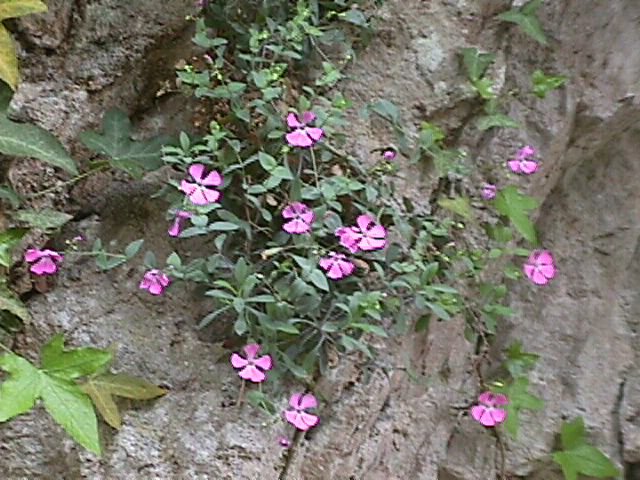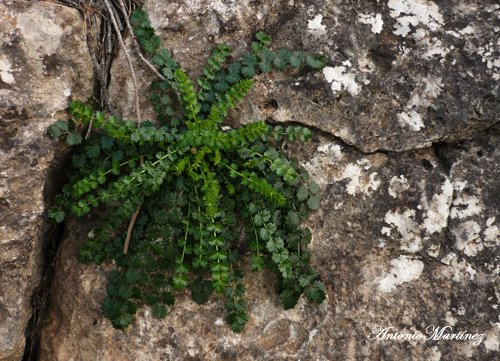Nature is definitely magical ... if we look at a rock in a microscope, we will see many cracks, from the smallest to the most clearly visible and if we drill a well in rocks, we will most likely find water, often only 5 to 10 meters below the surface. Then, this internal water that the rocks have can go up through the cracks, due to the capillary principles of nature; Of course, if a rock is in a humid environment, it will simply be saturated with water on its surface.
In this way we already have an essential element for the growth of plants: water; but, the greatest difficulty that imposes for a plant to live on the rock is the scarcity and practically absence of land where to root and settle; however there are specialized plants (ferns, lichens or mosses), which can be fixed with great ease on these small fissures and cracks.
Plants that specialize in living on rocks are called rock-dwelling plants (rupicolous plants) and use different types of strategies to colonize this seemingly hostile environment. Some species penetrate their roots into cracks and fissures to anchor in the rock. In these cracks, whether small or large, in addition to ferns and mosses, we can find the so-called "breaker" plants of rocks like those of the genus Petrocoptis.

Petrocoptis pyrenaica is a "breaker" plant of rocks
In any of the varieties of the rupicolous plants, we are talking about exclusive habitats that few plants dare to colonize and, let us say, to "dominate" occupying a good part of the available surface.

Greetings.
Sort: Trending